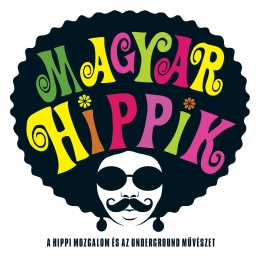art or business
Hungarian Hippies
Hungarian Hippies
The hippie movement and the underground art.
A selection from the underground art scene and contemporary photos of the 1960s and 1970s.
The sixties in the age of the hippies. Or is it not?
In which way is the Hungarian hippie culture similar to the American, English etc. hippies’?
Does the “Hungarian hippie” exist at all?
The exhibition and the connected publication dealing with the “Hungarian hippie” phenomenon – or the authority of such a term - are the results of a long selection, and they are made up by pairing two different viewpoints. According to this the exhibition has two overlapping parts: one deals with the effects of the hippie movement on Hungarian fine art, - selected by the art historian Mónika Zombori; the other consist of original (digitalized and printed) private and public photos from the sixties-seventies, chosen by András Mezey “Golyó” who lived in and witnessed that period.
„The art section of the exhibition examines the effects of hippie movement on the Hungarian underground art scene, searching for connections and parallels within the subjectively chosen examples. Since the hippie movement itself reached Hungary only indirectly, through mediators, its effect can only discovered implicitly in the art of the 1960s and 1970s. In the given decades of the Kádár era a special subculture was born which described itself in opposition to the official art scene. The artist members of this subcultural group had an unusual way of life through which they continuously expressed their opposition to the ruling regime, so their different mentality stemming from their subcultural life ab ovo defined the form and content of their works. In the exhibition those groups and personal paths are presented that are in connection with the hippie mentality or attitude to life, and also those that’s existence are induced by the current social, sociological and artistic situation. The presentation of the various genres was an important aspect of the concept: besides rarely seen paintings, graphic works, and sculptures there are also films and the masterpieces of poster art on display at the exhibition.” /Zombori Mónika/
„The “Downtown Gang” started to form around 1965 from youngsters living at different parts of the town, who usually gathered in front of the Jégbüfé. Their favourite places were the Kárpátia, the Korzó, the Apostolok and the Bajtárs restaurant, the Építők club, the Eötvös club, the Egyetem pub, the Vén Diák pub, the Belvárosi café and the stairs of the Danube bank. The other gang, the Kalef had their base at Moszkva tér since the end of the 1950s, but they also frequented the Danube bank, different downtown pubs, the Ifjúsági Park and the Bem wharf. Besides them there were many more gangs, for example the Városmajori and tha Nagyfa. These youngsters attended mainly the concerts of the Scampolo, the Atlas, the Liversing, the Atlantisz and the Dogs, later the Sakk Matt, the cTűzkerék, the Kex, the Mini and the Syrius. Hundreds of people belonged to these - in many cases overlapping - gangs. Some of them get together nowadays, too. The former Downtown Gang members meet at the Bodola-remembrance parties at the Bem wharf, the old Kalef Gang members use to meet at Dörgicse. There were many photographers among them, who recorded the members and the events: Gyuri Vértes (Fotojás), István Bakos (Beethoven), György Bodola, János Vető and others. The exhibited photos from the legacy of György Bodola and the collection of András Mezey give an insight into the time and the life of these gangs.” /Mezey András „Golyó”/
Exhibiting artists: György Kemény, János Vető, György Kovásznai, Ferenc Veszely, János Baksa-Soós, András Koncz, Lóránt Méhes, Péter Sarkadi, László Haris, Gyula Konkoly, Sándor Bernáth/y, Tamás Díner, Árpád Darvas, József Pecsenke
The works of art were selected and the exhibition was curated by: Mónika Zombori, art historian
The contemporary photos were selected and the boards were composed by: András Mezey „Golyó”
Opening: 6 February 2014, 7 p.m.
Opened by: Zsolt K. Horváth social historian, critic and András Mezey “Golyó”
On view: 7 February – 28 March 2014
After the opening there is an official afterparty starting at 10 p.m. at Instant Bar, just a few metres from the gallery!
(Address: 1065 Budapest, 38 Nagymező Street)
Supported by: NKA

